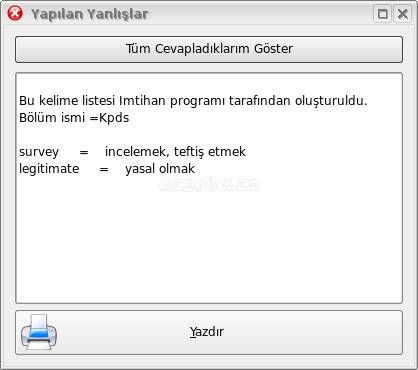

If you perform an operating system detection scan you will also find the operating system information displayed in this tab. The Host Details tab lets you see information that includes how many ports were scanned for the host, and how many ports were closed, filtered, and open. The Nmap Output tab in the middle of the screen lets you see the output that Nmap would have presented on the console. Clicking the Services button changes the listview on the left side of the window to show a list of services when you select each service, the Ports/Hosts list on the right side of the window shows you which hosts on the network have that service available. If you are scanning an entire network, you might like to view by service by clicking the Services button in the middle left side of the window. Because I scanned localhost in the above test, it makes the most sense to view the results by host. You can view the results of a scan either by host or service. One abnormality I found here was that when you first start Umit the New Scan button has focus rather than the Target field, but Target does have focus when you hit Control-T to get a new tab. You can also use the mouse to select your profile, but it is nice to see an application that lets you use the keyboard only. Once you type in the target, pressing Enter takes you to the Profile selection, where the up and down keys allow you to pick your profile. When you create a new tab, the Target field has focus automatically, allowing you to start a new scan without having to use the mouse. If you want to run another scan, press the New Scan button or use the Control-T hotkey to create a new tab first. In this case, we used the default Operating System Detection profile and explicitly nominated localhost as the Target to scan.


Just below the toolbar is a tabbed interface showing what profile was used to scan what host (the Target). You should see a window similar to the one in the screenshot below. To start testing Umit, execute umit, type in localhost in the Target field, and press the Scan button. Once the dependencies are installed, getting Umit itself onto the system follows the normal setup.py invocation process:
#Unix postman software umit uyar install
A Fedora 9 machine will likely have most of the dependencies already installed, perhaps requiring only python-sqlite2 and python-psyco to be installed: yum install pygtk2 python-sqlite2 nmap python-psyco. All are easily installed for Debian/Ubuntu systems the Umit site recommends using the command apt-get install nmap python2.4 python2.4-gtk2 python2.4-pysqlite2 python2.4-psyco. Installing Psyco, a specialized Python compiler that can speed program execution, is optional, but I recommend it. You also need to install the PySQLite2 Python bindings to SQLite. Umit is written in Python and uses the GTK+ toolkit for its graphical interface, so you need Python, GTK+, and the GTK+ Python bindings to be installed as well as Nmap. I built version 0.9.5 of Umit from source on a 64-bit Fedora 9 machine on which version 4.53 of Nmap was installed. Umit is packaged for Ubuntu Intrepid but not for Hardy, and not for Fedora or openSUSE. A profile lets you configure how a network scan is performed, change the source information for the scan, and explicitly nominate hosts to include or exclude from the scan, as well as various more advanced options. The utility’s most useful features are its stored scan profiles and the ability to search and compare saved network scans. Umit is a user-friendly graphical interface to Nmap that lets you perform network port scanning.


 0 kommentar(er)
0 kommentar(er)
